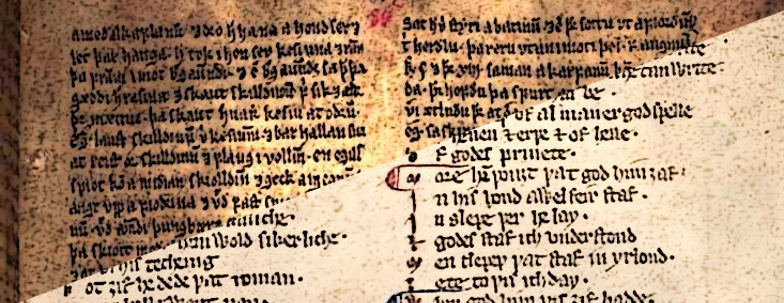Sin and Evil Assignments

Assignment 3: Comparative Reading
Over the past few weeks I've asked you to practice "reading into" a text: asking questions about the implied audience, implied author, and implied circumstances of our historical texts. In this final paper, I'd like you to pick two texts, pick a question relevant to both, and do a comparative reading of the two
Step one: Pick two texts that you have not yet written on this semester.
Step two: Pick a question relevant to both texts that involves reading into the text. For example: "What are the texts' expectations about the religious beliefs of the implied audience?" or "What do the implied circumstances of the texts suggest about their possible functions?" or "What is the relationship between the texts' implied authors and their texts' implied audiences?"
Step three: After trying to answer your question for both texts (and taking copious notes), make a nuanced argument about the similarities and differences between the texts, and how that new knowledge affects how we might read the text today. For example: "While the implied audience of X seems to be fully Christianized, the implied audience of Y seems still to be in the process of conversion; this leads us (for "reasons") to question the motives of the implied author of X more than those of the implied author Y." (Where "reasons" is a more thorough explanation of why).
Your paper will need to perform the textual analysis to prove the claimed similarities and differences from the texts themselves, and tie the significance of your findings to the way we read the text today.
You should not need to go to outside sources for this paper, but if you feel uncomfortable with the basic historical context of a certain text, you have the introductions that accompany the editions we've used (the Penguin Njal's Saga; the TEAMS Book of Margery Kempe and Shewings of Julian of Norwich; the Broadview Beowulf or the HUP/Dumbarton Oaks Genesis A/B (whichever you did not write on for the close reading assignment)) as well as my mini-lectures, and, of course, me, as resources. But let me re-iterate: any claims you make about the implied authorship, audience, or circumstances of a text must be backed up by readings from the text itself, rather than outside sources.
The paper should be 8-9 pages, double-spaced, normal margins, without eccentric fonts, and should be submitted to me by e-mail by 11:59pm on Friday, December 13.